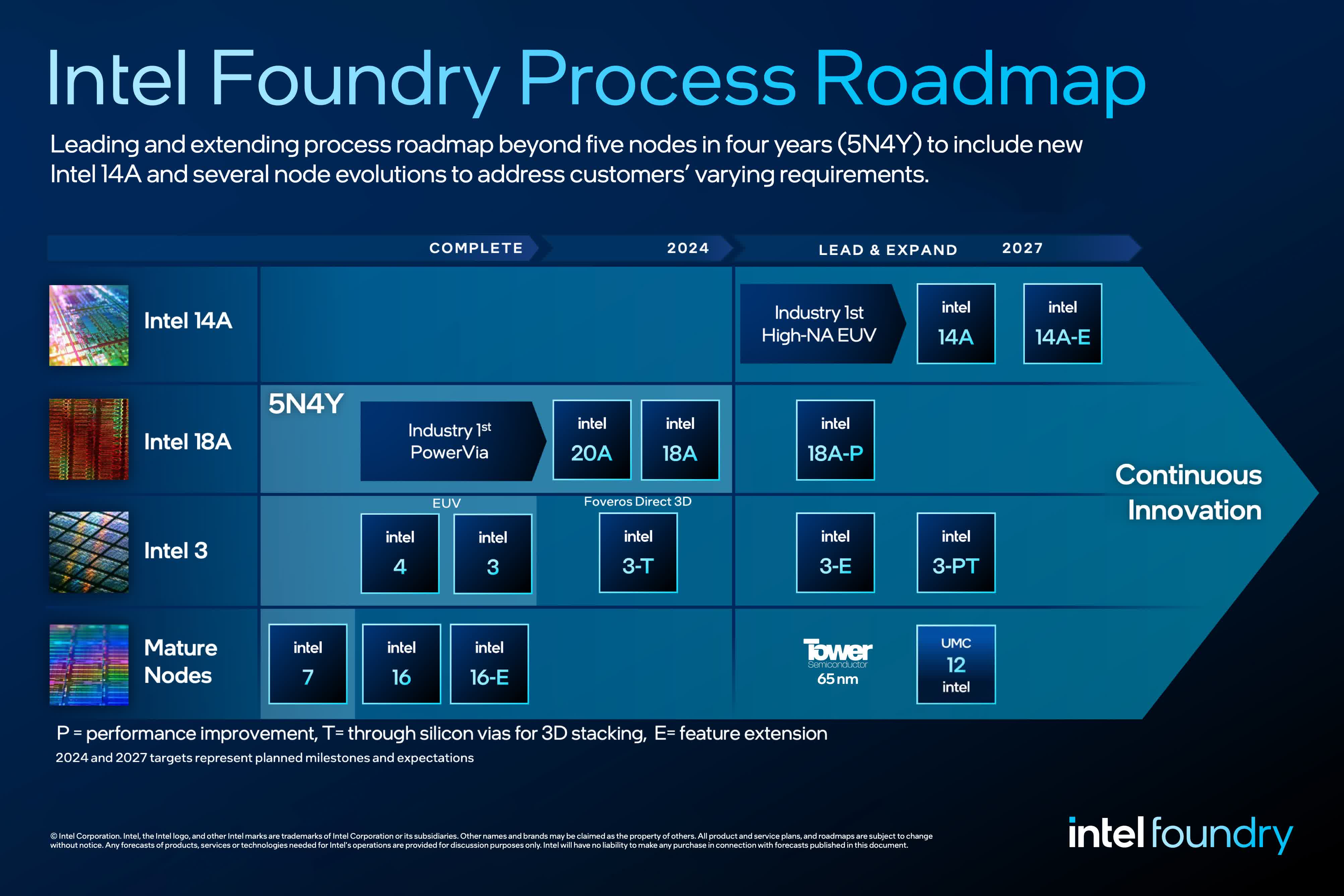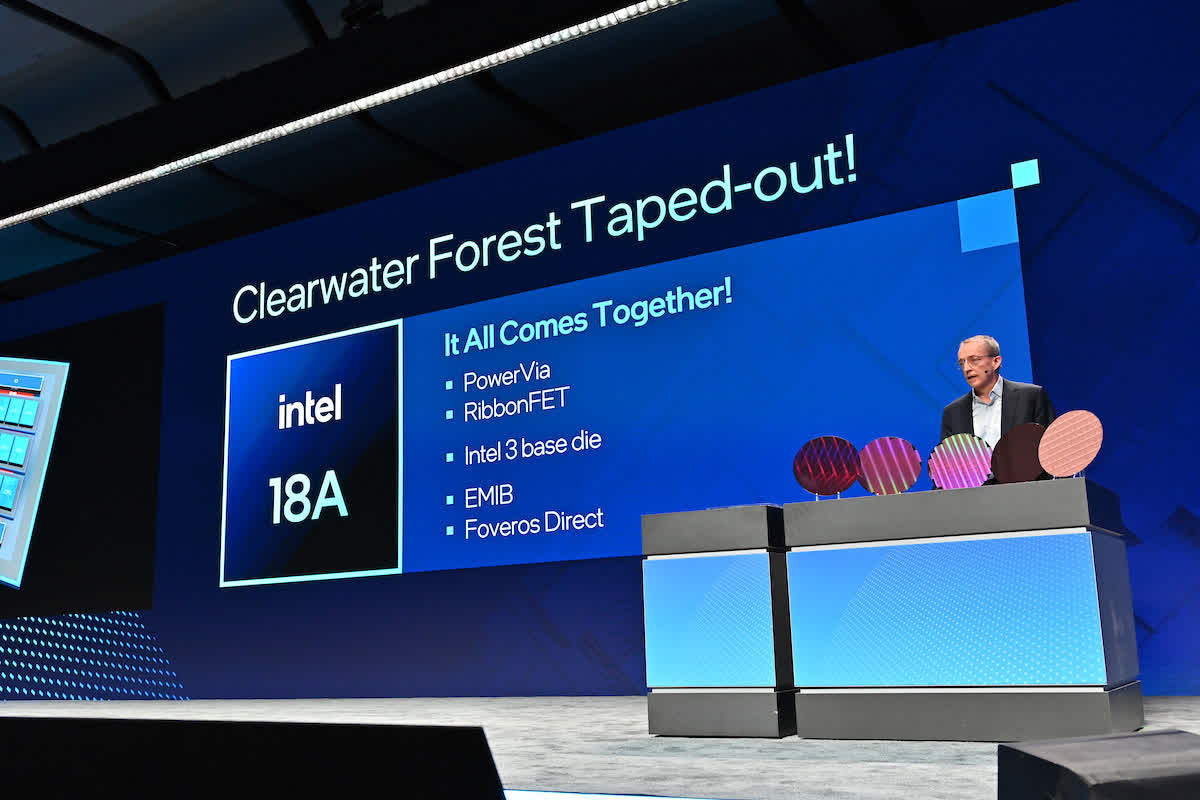Editor's take: While the company is moving in the right direction, the scale of the problem and the timeline of the solution are so big it is hard to get too excited about the Intel's turnaround.
About a week ago, Intel broke out the financials for their fab operations as they began formally reporting this segment as a standalone entity. We made some guesses about their numbers back in February, and for pure speculation, we did pretty well; Intel, not so much.
We forecast that Intel Foundry would lose $5 billion next year, and it turns out they are losing $5 billion this year, and probably a similar amount next year.
If anything, we were too easy on the company. We thought their revenues would be higher, $29 billion modeled for 2023 versus the actual $23 billion. It looks like their revenue curve is about a year ahead of our model. The positive spin on that is they are a year closer to turning things around. The negative spin is that the company is even more reliant on TSMC than we had thought, a trend which does not peak until 2025.
Editor's Note:
Guest author Jonathan Goldberg is the founder of D2D Advisory, a multi-functional consulting firm. Jonathan has developed growth strategies and alliances for companies in the mobile, networking, gaming, and software industries.
Our biggest miss was gross margins. Intel Foundry had negative gross margins in the past two years. In our estimate, we had called out gross margins as the biggest swing factor in the model, as the accounting for that is highly subject to decisions the company would make. The company is loading up costs on the Foundry, which makes sense from a communication standpoint – kitchen sink the bad news now, make it look as bad as possible, so that every future improvement is that much easier.
The drawback of this approach is that it means the product side of the company now has a huge burden on it. Remember, Intel as a company is still profitable. If IFS is losing money, then it has effectively been subsidizing the product side.
We know this from experience; Intel's product team could always rely on the fabs to rush orders and provide short-notice hot lots and other special services for customers. If IFS is ever going to turn around its financials (which maybe it doesn't have to do), then the product side's sales teams can no longer rely on all that help. Can they still sell without it?
This is going to be a painful transition in culture for that organization. The way in which this gets resolved will tell us a lot about how serious Intel is about its Foundry business. If we do not start to see the product side come under margin pressure in the coming years, it implies the company has not broken past habits.
One item which caught our eye was the company making it very explicit that they want to move all production back to internal capacity as soon as possible. This makes sense in a business like running fabs where utilization and scale dominate economics. But maybe they should not be quite so vocal about it. Intel is still heavily reliant on TSMC, and has now effectively moved itself down TSMC's Customer Priority List.
Another concern we have is the assumptions on how the company plans to build up the Foundry's margins. Their 2030 (!!!) target is 25%-30% operating margins, which is reasonable enough, albeit still 10+% points lower than TSMC. The build rests on four pillars – "Transistor Leadership", Internal Mix/Scale, Cost Efficiency, and OpEx Leverage.
The last one, Leverage, is straightforward; that is the whole basis of running a fab, fill them up to make them profitable. Internal Mix also makes sense; Intel is moving away from its past practice of abandoning old manufacturing processes and will continue to operate old, fully depreciated fabs.
Also see: Intel unveils its Gaudi 3 AI accelerator: 128GB HBM2e memory, set to rival Nvidia H100 and AMD MI300
But the remaining two seem much more challenging, and over half of the forecast improvements come from these. Transistor leadership is going to be a hard-fought battle, and there is an inherent tension between the cost of advancing that leadership, with big upfront R&D required. This leaves efficiency which, as we noted above, involves eradicating bad habits.
Investors did not like Intel's numbers, with the stock down around 10% this past week. We assume many investors had already built models similar to ours, so their disappointment stems largely from the very long timeframe for IFS to reach breakeven, which seems to be somewhere towards the end of the decade. And that really is the heart of the problem.
The timeframes involved for this improvement are so long that there is little reason to own the stock. A lot can still go wrong – delays to some of this seem likely given the complexities involved, and in the interim, Intel's results will depend largely on the product side of the company, where conditions are not easy. To be fair, Intel is moving in the right direction, but by the time it starts to hit these targets, most of the people who would buy Intel stock today will have moved on in their careers.

